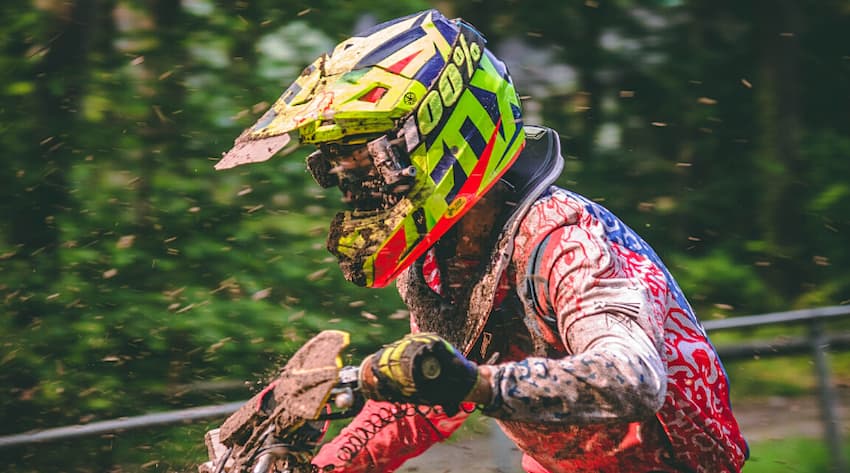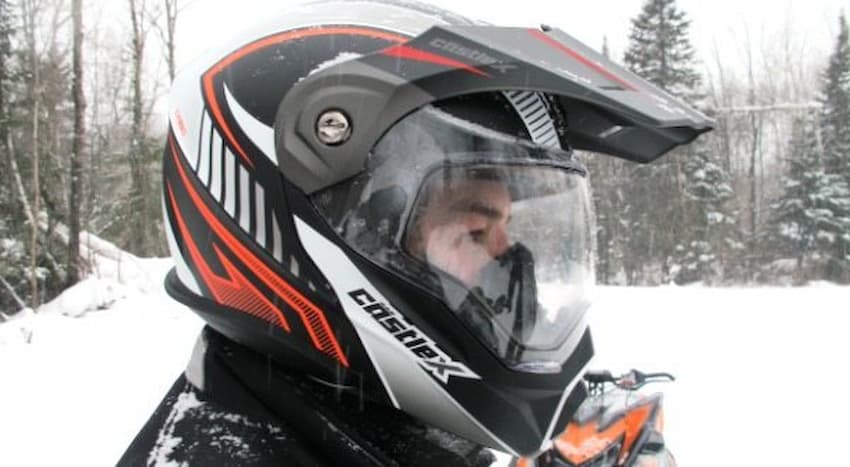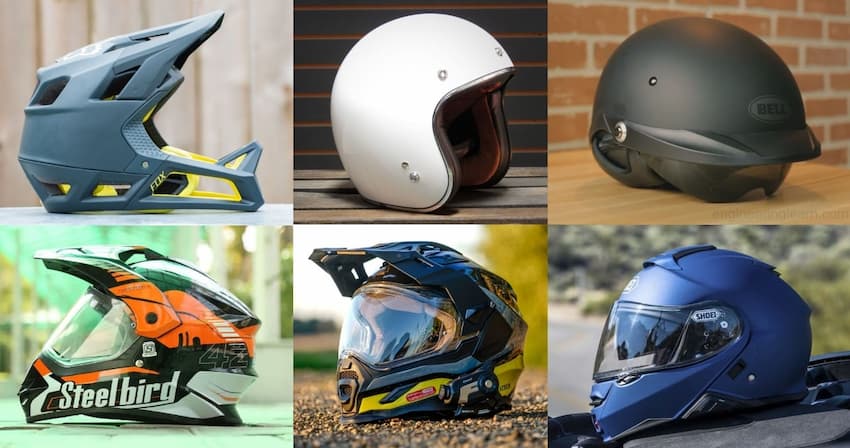Types Of Helmet For Motorbike. If you’re new to riding a motorcycle, the variety of helmet choices can be overwhelming, especially because you’re counting on your choice to save your life. It’s simple to choose a helmet that looks good, but you already know that you need a lot more from your helmet.
On the market today, there are many different Types Of Helmet For Motorbike. Whilst also they all have the same goal, some will protect you better than others.
Choosing the most suitable Types Of Helmet For Motorbike is completely up to you, but you must understand everything concerning them in order to make the ideal choice.
When you understand the various types of helmet for motorbikes, it will be much easier to find the one that is right for you.
Types Of Helmet For Motorbike
Here, let us now look at the most common types of helmets for motorbikes on the market.
Full Face Helmets

Full-face helmets are widely regarded as the safest option for both road and highway riding. They offer complete protection for the entire head and face, also with a chin bar and a repaired visor.
Many models are extremely versatile and suitable for a wide range of roads, motorcycles, and ranges. They simply differ depending on the type of riding you do. Because of this, some full faces are better for you than others.
Sport cyclists are typically hunched over, necessitating complementary ergonomics from a helmet. The chin bar on sportier helmets will undoubtedly be higher, and the eye port should be angled slightly toward the top of the helmet.
In addition, airflow ducts will be placed near the top of the head to draw in the most air in a put setting.
Flashy full faces are also dangerous against the wind, and there are special aerodynamic rules in place to prevent helmets from lifting at broadband.
A full-face helmet should have a slightly different shape for people who use an extra upright setting, such as cruisers, tourers, or ADV cyclists.
The chin bar will undoubtedly extend a little lower, the eye-port will be tilted all the way out, and there will be more frontal duct. These touring helmets, like casual helmets, are designed for comfort and soundproofing.
The problem with full faces is poor airflow. If you close the visor— and anyone who has taken a wasp to the eye at 100 kilometers will certainly close the visor— the helmet is essentially a protected bubble.
To keep your hair from instantaneously igniting, look for a product that is well-aerated. Moisture-wicking, removable, and machine-washable cushioning is another plus because no one wants to put their head in a stinky pail.
When it comes to full-face helmets, there is also the visor issue to consider.
Depending on the amount of sunlight you get, the UV protection rating may be critical.
You should also pay attention to lens shades; they serve a purpose other than just looking good!
If you ride in particularly harsh conditions, a mirrored and dark-colored lens will protect you from the glare.
And if you live in an area with constant cloud cover, such as the West and East coasts, a yellow-colored or rose lens will undoubtedly help boost meaning.
Clear lenses are ideal for anyone who does some evening riding, whereas jet-black lenses should be utilized with caution.
Trust me, a power outage visor is fantastic until you enter a slightly dim passage and smash into a wall.
Another issue with visors is fogging. And, believe it or not, there are more factors at work besides just your perspiring head. Anti-fogging lenses are really a good, but not perfect, solution.
Find a helmet with a built-in breath box to reduce fogging. This directs yours exhales away from the visor.
Modular Helmet

Types Of Helmet For Motorbike – Modular, also known as flip-up designs, are a hybrid of 3/4 but also full-face helmets. Their name comes from the fact that the chin bar as well as the visor can be flipped up.
At the first glance, they appear to be full-faced and feature the same products. These fit almost identically and are entirely surrounded once the flip-up element is lowered.
Most designs have included a standard visor which does an excellent job of keeping your eyes safe. Some may include an additional visor that offers better sun protection.
Keep in mind that these tend to take into account a lot more. The additional joint that stays in the flip-up adds to the total weight. Since it is powerlessness during the influence, this hinge has an impact on overall safety and security.
If you’re an experienced cruiser or a rider, this is the design for you. It has large eye openings and a reduced chin bar on the face. This is ideal for an upright riding position.
A good ventilation system is also necessary to keep the air flowing once the flip-up element is down and covering your face. Without air vents, the visors would fog and the interior would become quite warm.
Open-faced helmet

Open Face Helmets are a long-time favorite of low-speed cyclists and scooter riders because they cover the sides, top, and back of the head whilst also leaving the face areas completely exposed to the breeze.
Because there is no functional chin section, open-face helmets provide much less accident protection. An adaptable strap around the chin secures them to your head.
The locations they cover are extremely secure. In fact, they are designed to be structurally equivalent to full-face models, therefore they do an excellent job of keeping your head secure.
Half Helmet

A half helmet has no chin bar or visor, only a dome-shaped upper piece to protect your skull. Unsurprisingly, they provide the least amount of protection of any type of motorcycle helmet, and they are the minimum that is required in the majority of states that have motorbike helmet regulations. Their benefit is undeniably increased airflow.
If you choose to shake a half helmet, you must wear protective eyewear. UV-polarized riding safety glasses with just a backstrap are a preferred option, but anything is preferable to nothing. Motorcycle riders who choose half helmets generally wear neck and face guards to keep insects and dirt from flying directly into their mouths.
Read more about: Types of Different Motorcycles
Dirt Bike

Because off-road motorcycle riding requires more physical exertion, dirt bike helmets seem to be lightweight and designed for maximum airflow so the rider can breathe easily—especially during the warmer months of off-roading. Dirt bike helmets have less insulation inside, which adds to the need to stay awesome. The one-piece construction provides superior defense around the chin.
Off-road helmets have large, extendable “sun peaks” that provide a variety of features. Initially, they keep sunlight out of your eyes, which is more important once you’re riding down and up hills at high angles while off-roading.
Dual-Sport Crossover

Dual-sport helmets have been thought to be a hybrid of off-road and full-face models. At first glance, their exterior appears to be similar to an off-road version, as these also have large visors and lower chin bars. Nonetheless, because they are well-padded and comfortable, their indoor versions appear to be full-face versions.
They are designed to provide the best of both worlds, allowing you to use them both on and off the road.
To summarize
Overall, each of the six Types Of Helmet For Motorbike has advantages. The decision is based on your specific riding requirements. Consider your motorbike, average speed, as well as the season you are riding in before selecting the best helmet for you.

